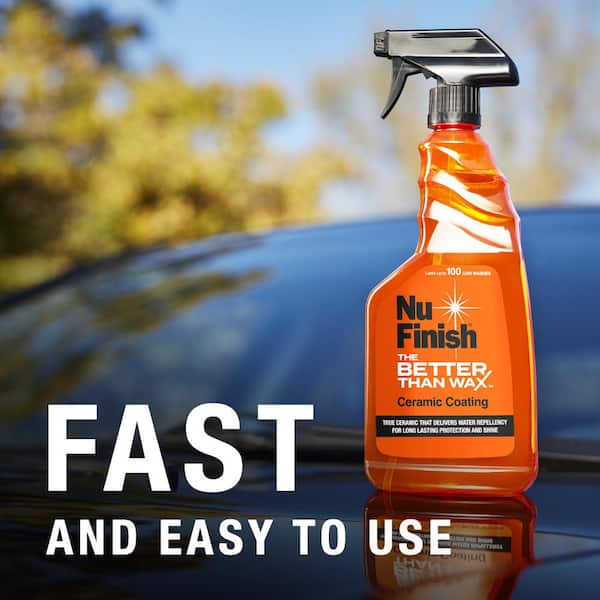Specialized Providers for All Vehicle Types with Ceramic Coating Philadelphia
Specialized Providers for All Vehicle Types with Ceramic Coating Philadelphia
Blog Article
Why Ceramic Covering Is the Ultimate Solution for a Flawless Finish
Ceramic layer has actually emerged as a leading solution for those seeking a flawless finish for their cars, thanks to its remarkable sturdiness and safety attributes. What factors genuinely set ceramic finish apart?
What Is Ceramic Finishing?

When applied properly, ceramic finish produces a hydrophobic surface that repels water and dust, making it much easier to clean up and maintain. Unlike traditional waxes or sealants, which commonly provide brief security, ceramic coatings can last for a number of years, depending on the product high quality and application approach. The procedure of applying ceramic finishing calls for meticulous preparation, including extensive cleansing and sometimes repaint correction, to make certain optimum bonding and efficiency.
Ceramic layers are not limited to automobile surface areas; they can also be utilized on numerous materials, consisting of glass, steel, and plastics, giving a flexible option for improving protection. On the whole, ceramic layer represents a significant innovation in surface area defense modern technology, incorporating both aesthetic and practical advantages for a wide variety of applications.
Benefits of Ceramic Finishing
While many surface area protection choices exist, the advantages of ceramic finishing stick out due to its one-of-a-kind residential or commercial properties and durable efficiency. Among the key advantages is its exceptional toughness. Ceramic Coating Philadelphia. Unlike typical wax or sealers that require frequent reapplication, ceramic layers offer a durable layer that can last for numerous years, dramatically decreasing upkeep efforts
Another remarkable benefit is boosted protection against environmental impurities. Ceramic layers produce a hydrophobic surface area that fends off water, dirt, and different contaminants, making it much easier to clean. This attribute not just protects the lorry's appearance but also decreases the risk of corrosion and oxidation, especially in rough weather.
Moreover, ceramic finishes offer remarkable resistance to UV rays, preventing fading and destruction of paint gradually. This UV security is critical for preserving the visual value of surfaces and vehicles subjected to direct sunlight.
In addition, the glossy surface accomplished with ceramic finish improves the total aesthetic allure, offering surface areas a showroom-quality shine. Generally, ceramic coatings stand for a considerable development in surface protection modern technology, supplying long-lasting benefits that provide to both aesthetic and practical requirements.
Just How It Works
Understanding the science behind ceramic finishings reveals exactly how they supply such impressive defense and durability. At its core, a ceramic layer is a liquid polymer that chemically bonds with the lorry's manufacturing facility paint. This bonding creates a protective layer that is both oleophobic and hydrophobic, repelling water, dust, and oil. The main part of many ceramic coatings is silicon dioxide (SiO2), which is stemmed from quartz. This compound adds to the coating's hardness and resistance to scratches, UV rays, and environmental contaminants.
The application procedure includes numerous steps, consisting of surface preparation, which is vital to achieving optimal attachment. Once applied, the finishing goes through a healing procedure, during which it hardens and creates a semi-permanent bond with the paint surface area. This bond is what identifies ceramic layers from conventional waxes and sealers, supplying a longer-lasting protective barrier that can endure for years.
Additionally, the thickness of the covering can enhance its protective qualities, guaranteeing that it can stand up to rough conditions. Ultimately, the science of ceramic coatings integrates sophisticated products with cutting-edge application strategies to deliver an unmatched level of protection and visual improvement for cars.
Contrast With Typical Methods
When compared to traditional paint protection techniques such as sealants and waxes,The advantages of ceramic layers become particularly obvious. While waxes supply a short-term sparkle, generally lasting a few weeks to a couple of months, ceramic finishings offer a lasting useful content safety layer that can withstand for numerous years. This longevity considerably lowers the regularity of reapplication, making ceramic layers an extra economical solution gradually.
In addition, standard approaches often require extensive prep work and numerous applications to accomplish a sufficient level of protection. In contrast, ceramic layers bond at a molecular degree with the vehicle's surface area, producing a robust shield against ecological contaminants like UV rays, acid rain, and road salts. This bond boosts the automobile's resistance to scrapes and swirl marks, which are widespread with standard waxes and sealers.
In addition, the hydrophobic homes of ceramic coatings fend off water and dust, causing less complicated cleaning and maintenance. In contrast, wax and sealant-treated surface areas can bring in crud, requiring even more frequent washing - Ceramic Coating Philadelphia. In general, ceramic coverings not just provide remarkable security however likewise provide a much more enduring and visually attractive finish, developing them as the recommended choice for discerning automobile owners
Application and Maintenance Tips

Making use of a foam applicator, apply the layer in little sections, adhering to the supplier's standards concerning density and overlap. Allow adequate treating time in between layers, generally 1 day, to make certain proper bonding. After application, it is vital to prevent direct exposure to water or rough aspects for a minimum of a week to enable the covering to totally treat.
Furthermore, making use of a ceramic upkeep spray can improve the finishing's hydrophobic residential or commercial properties and long life. Routine examinations for any indicators more of wear will certainly assist preserve the layer's stability and protect that pristine coating.
Final Thought
In final thought, ceramic layer becomes a superior option for accomplishing a perfect automotive surface. Its exceptional durability, protective top qualities, and hydrophobic homes dramatically enhance the lorry's appearance while streamlining maintenance efforts. By forming a durable bond with manufacturing facility paint, ceramic layer efficiently guards against scratches, UV rays, and ecological contaminants. With a life expectancy prolonging several years, this advanced service not only preserves however additionally elevates the overall aesthetic allure of lorries, making it a cost-efficient financial investment for cars and truck enthusiasts.

Report this page